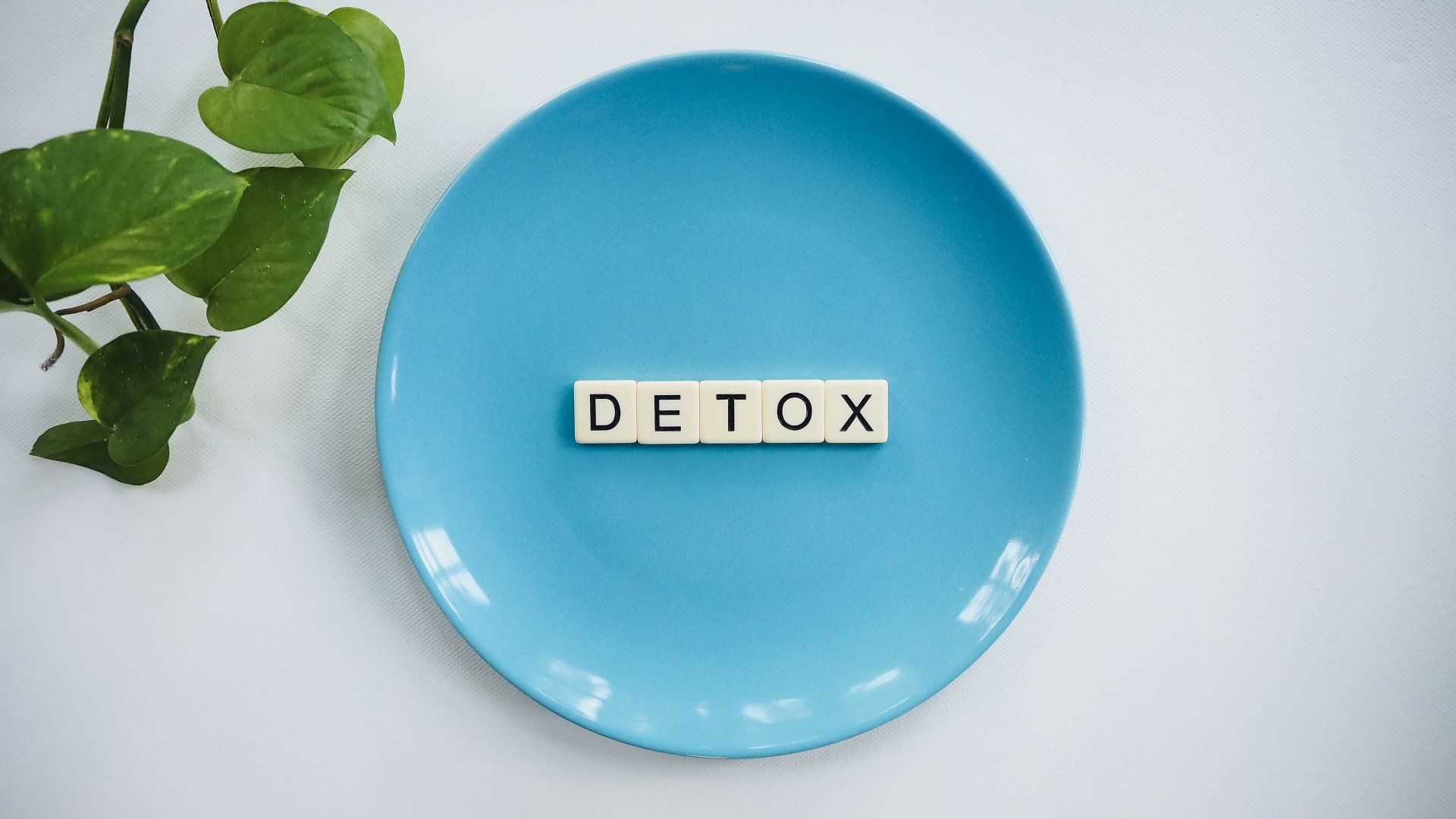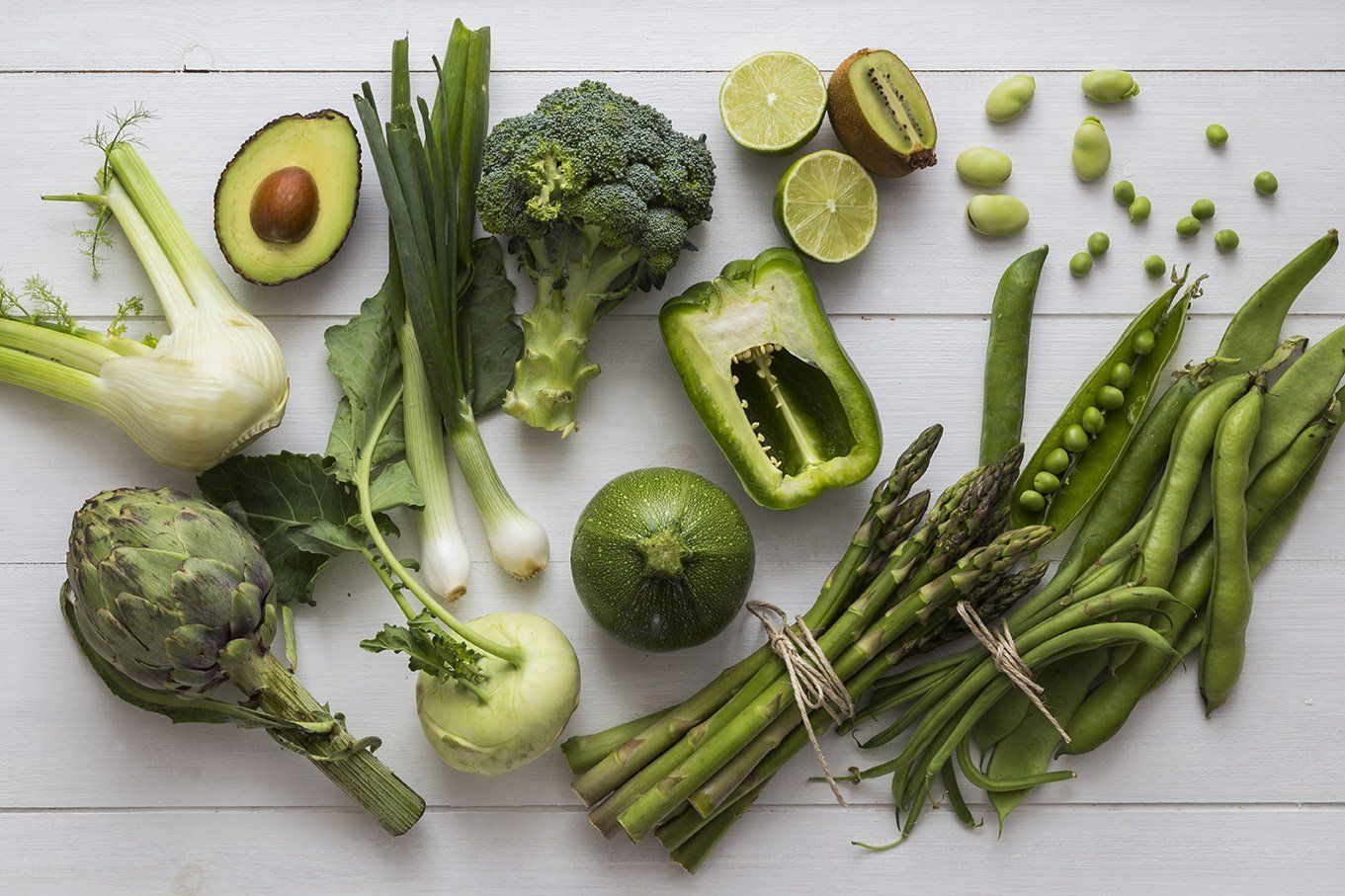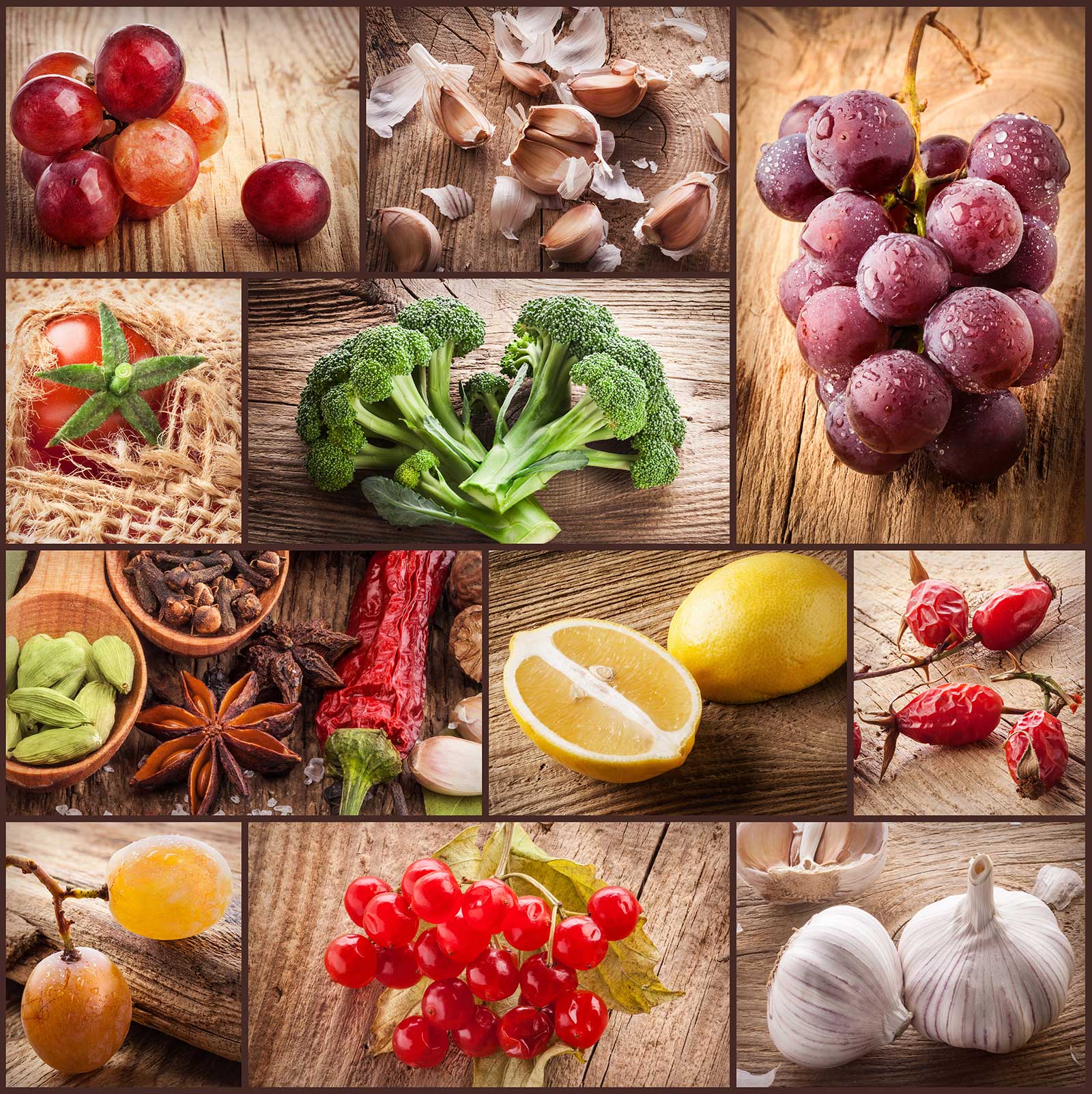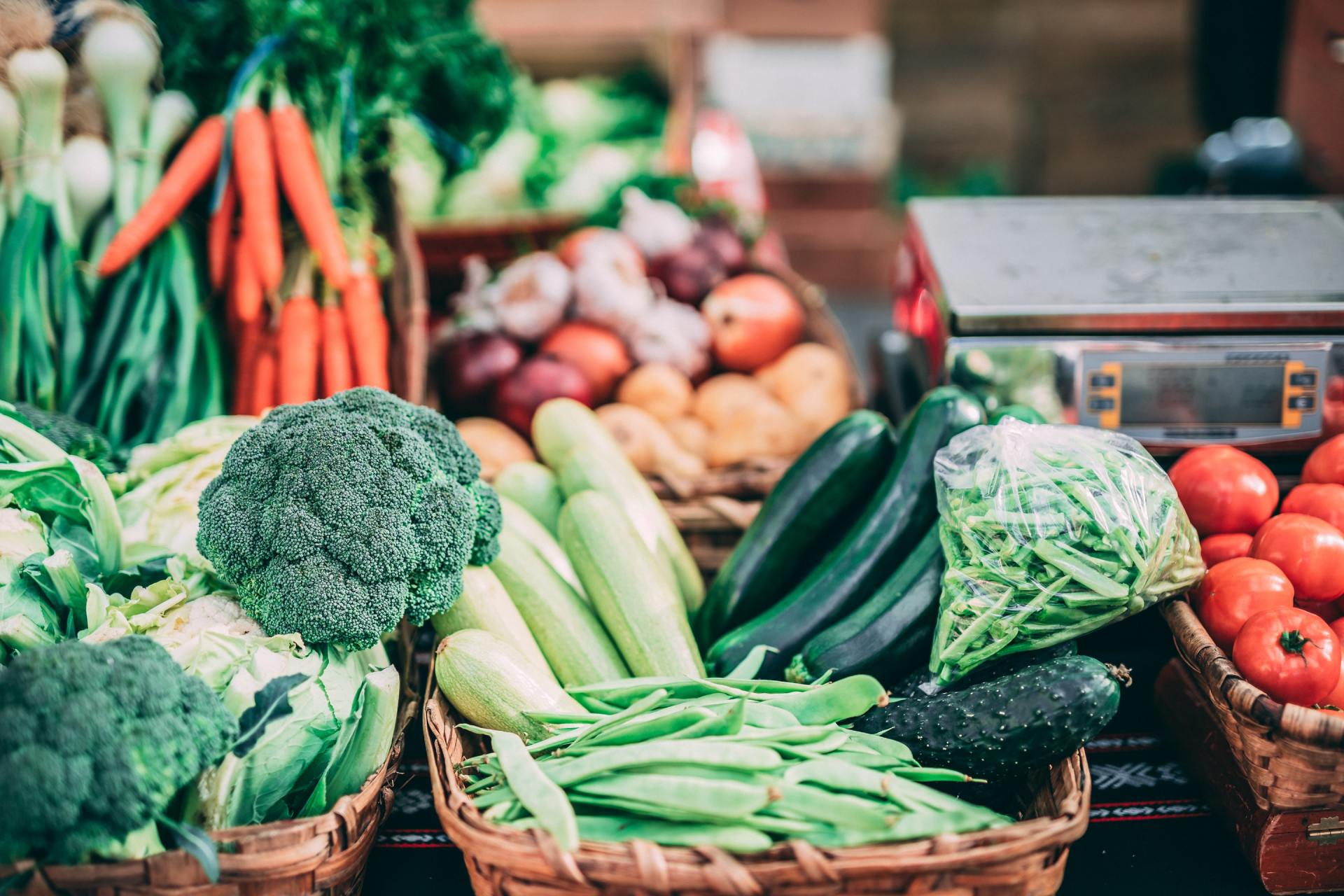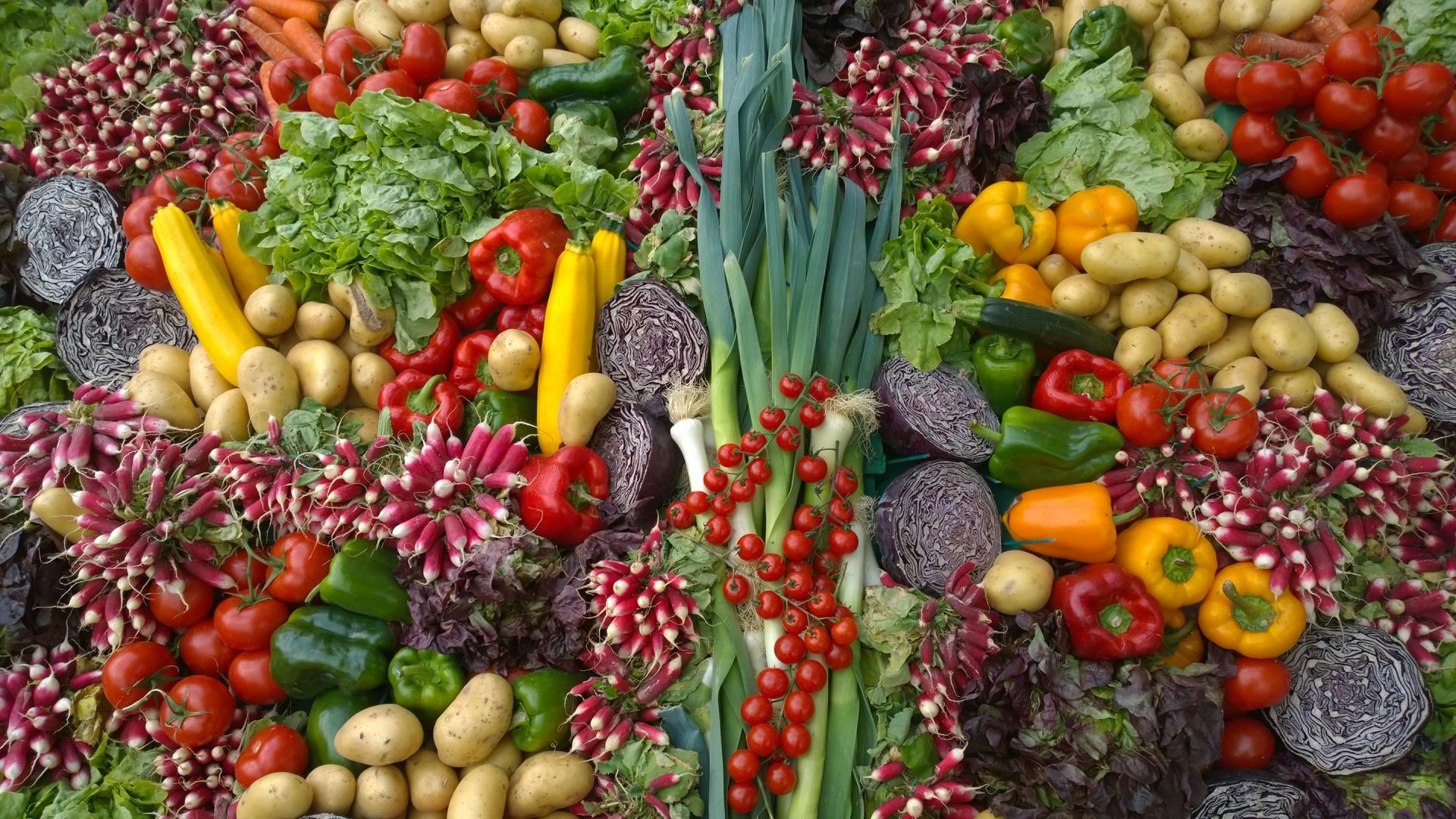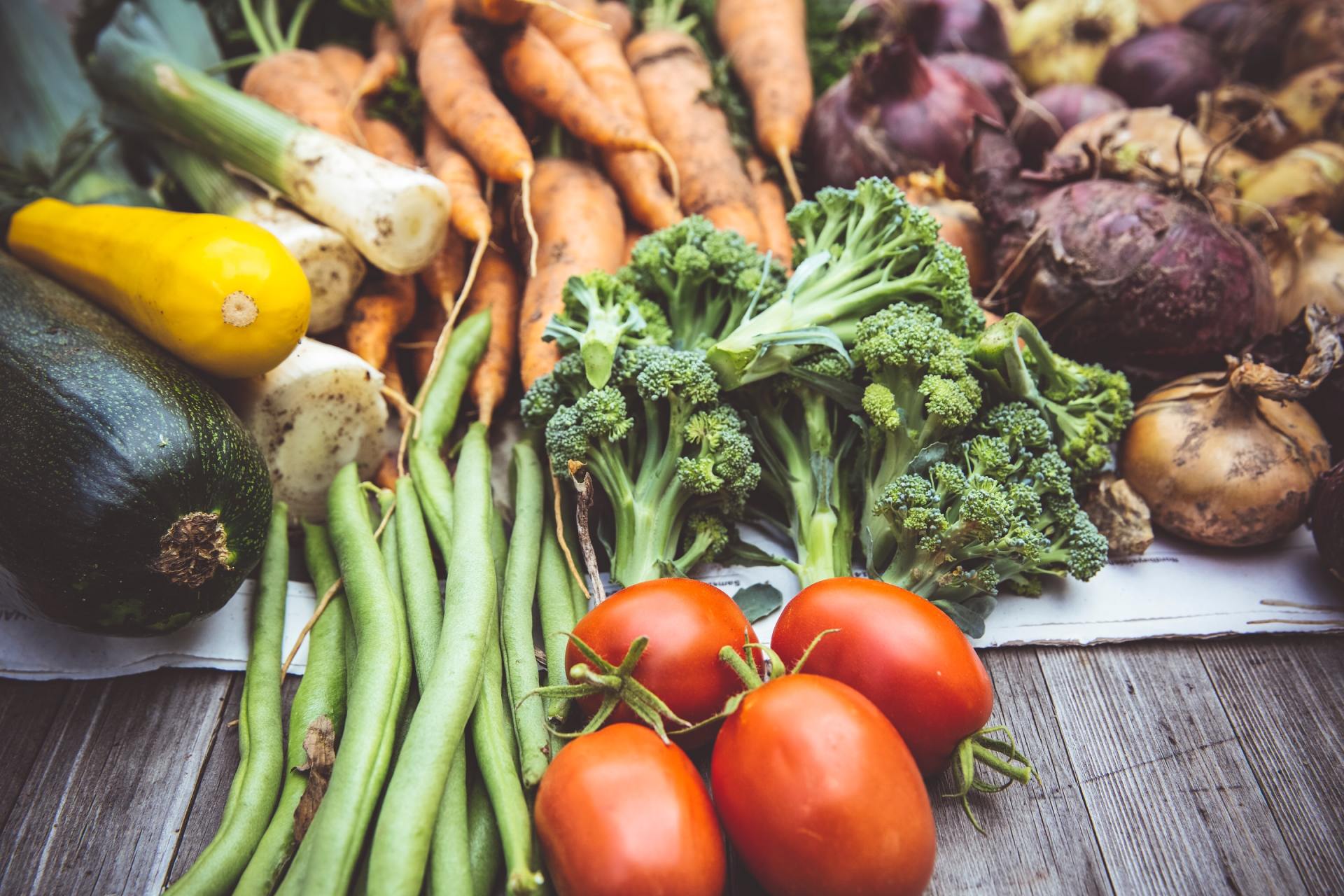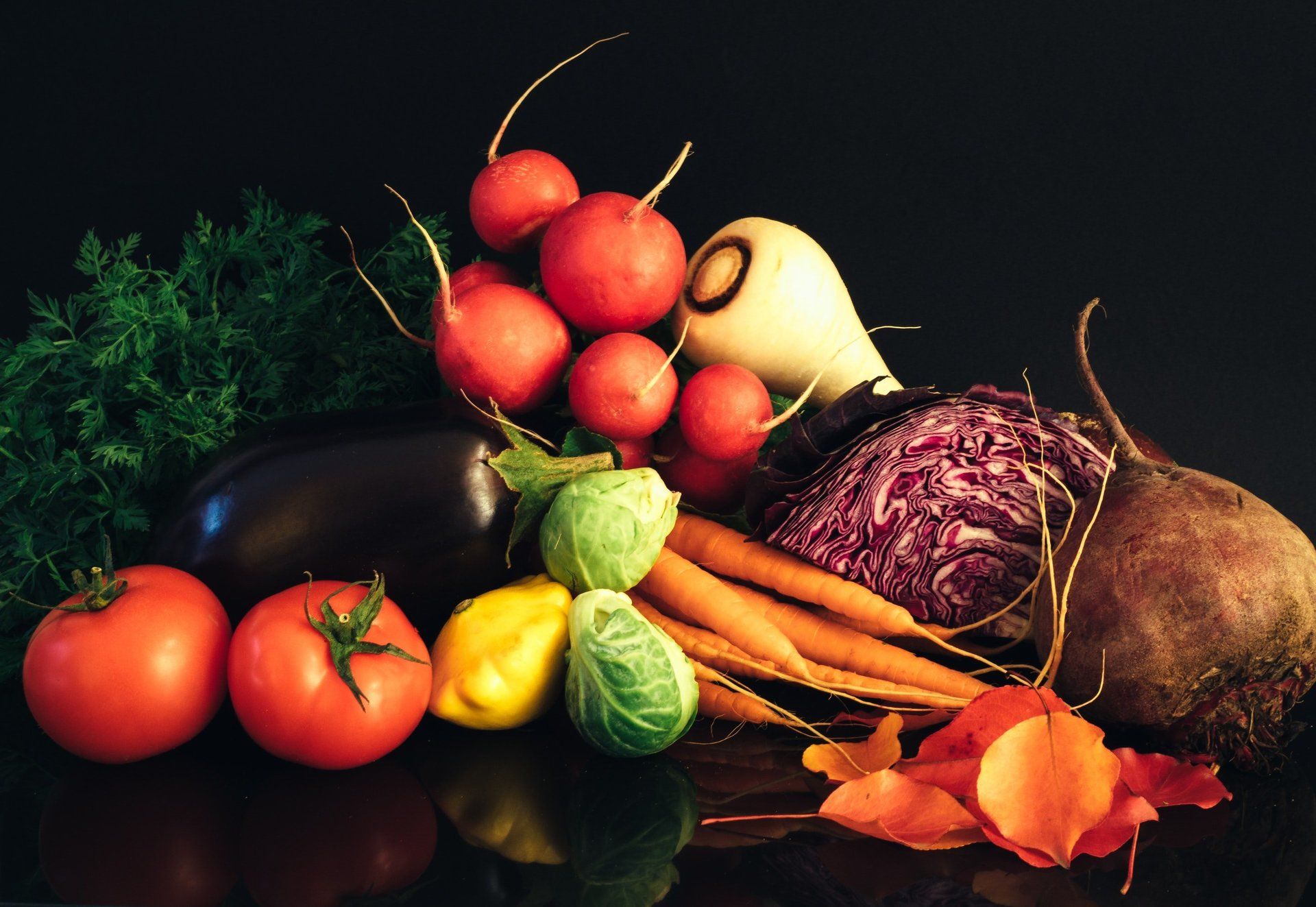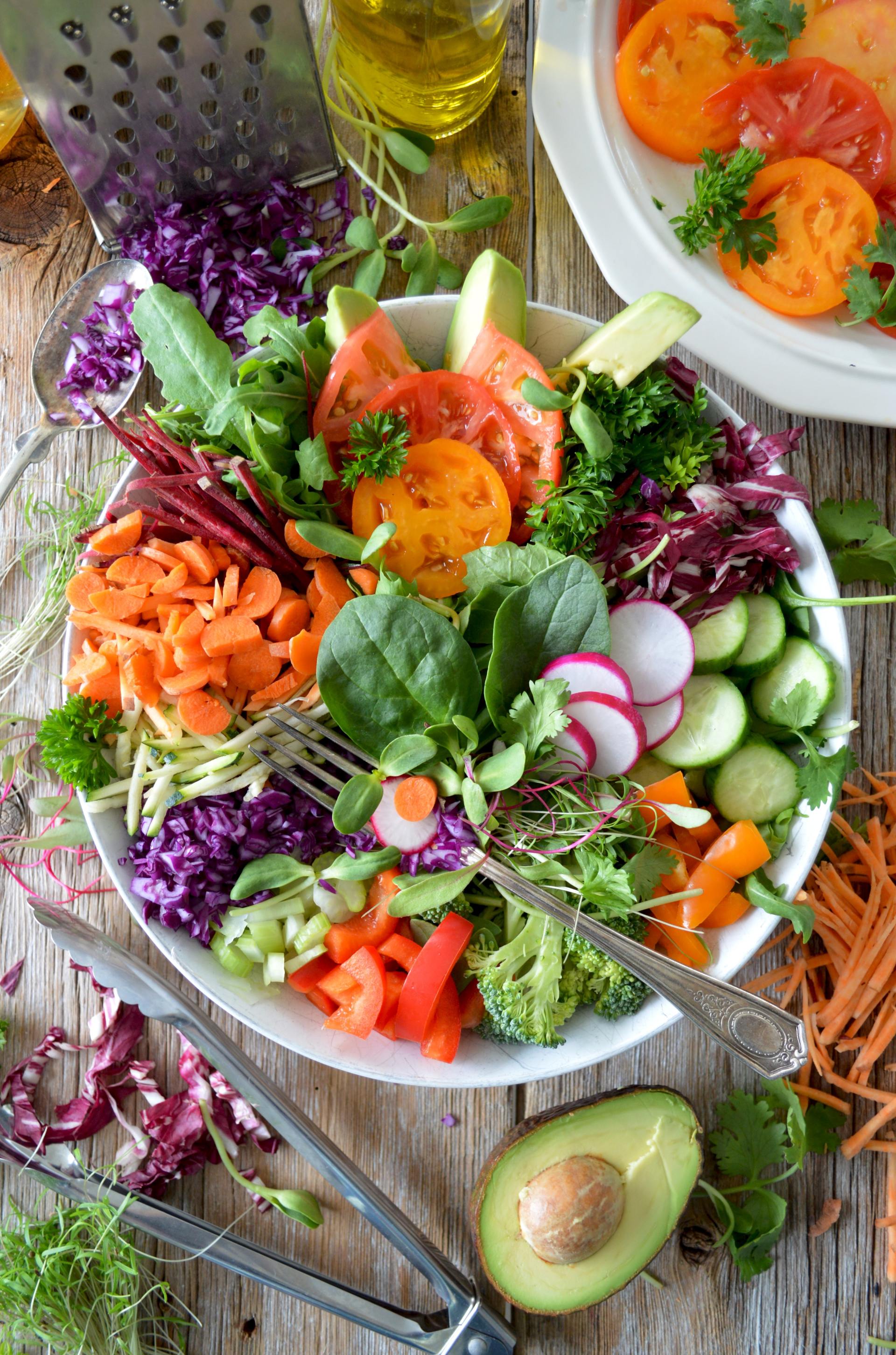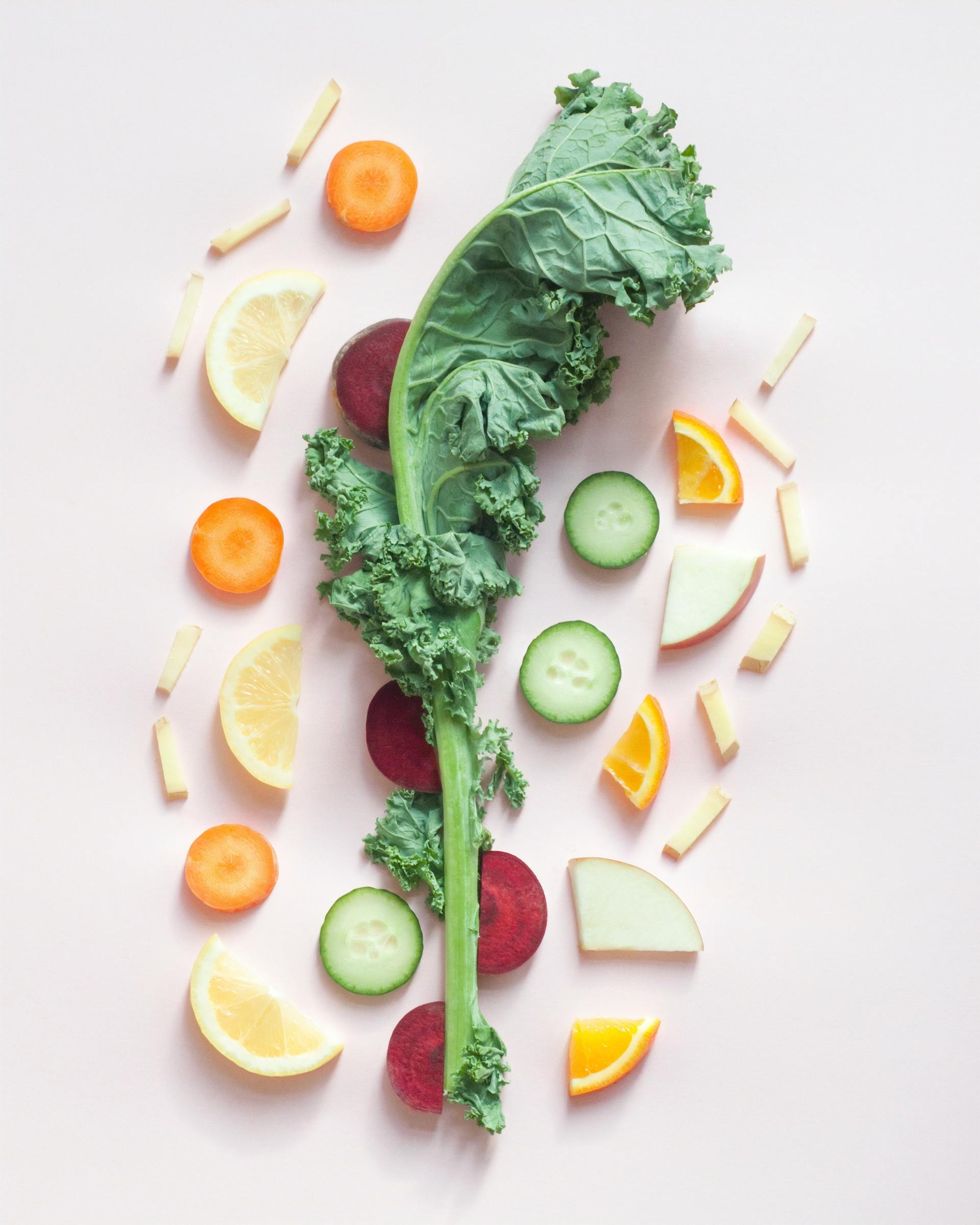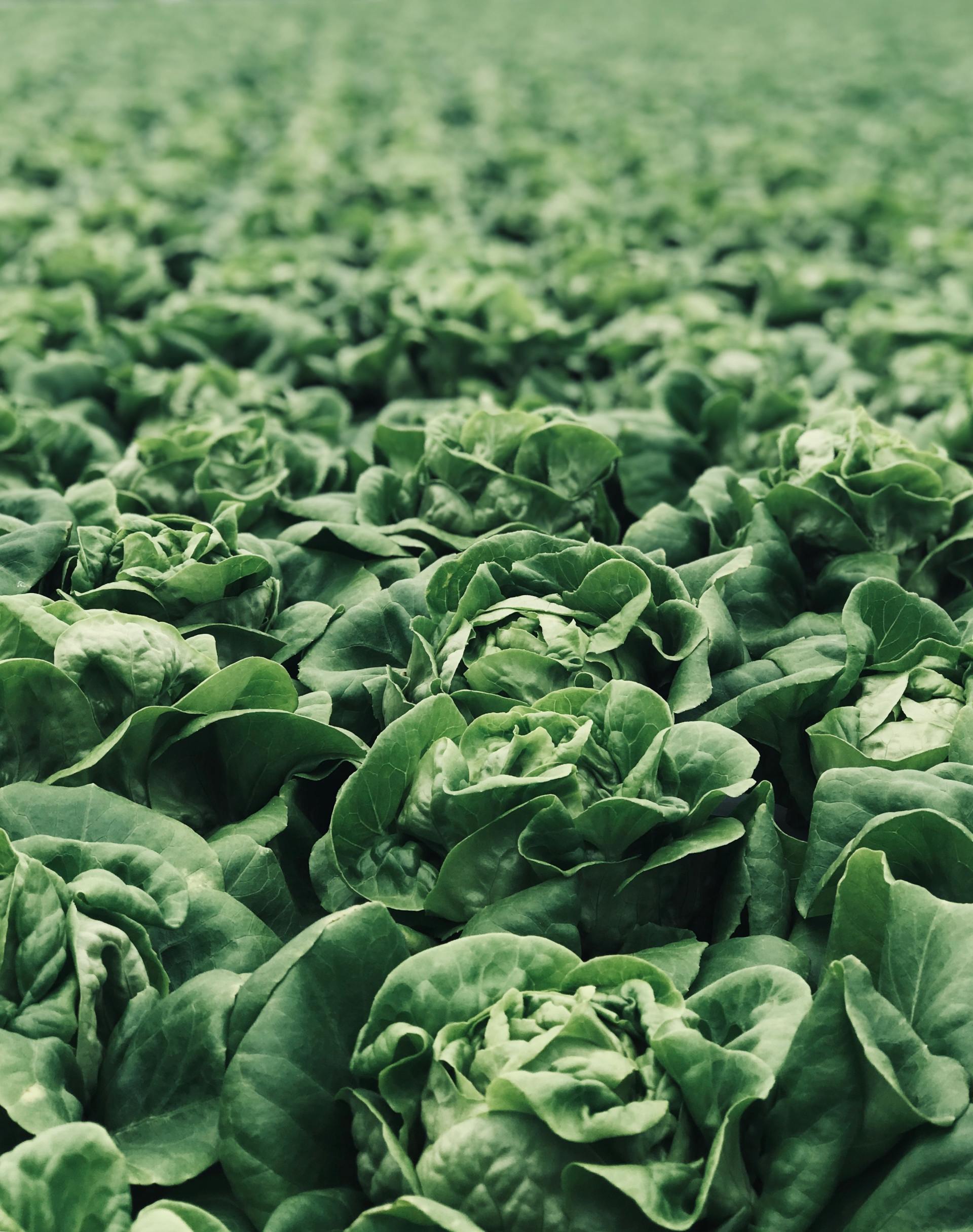Vegetable is a broad term that refers to the edible parts of plants, which are usually their leaves, roots, fruits, or seeds. Vegetables are a staple food across the world and are a fundamental part of modern agriculture.
Since they’re low in calories but high in nutrients, most health experts recommend that you consume vegetables daily. There’s a scientific consensus that a balanced, rotating diet of different varieties of vegetables is one of the best ways to source nutrients from your food starting at a young age.
Some Health Benefits
Vegetables are full of essential vitamins, minerals, and antioxidants that provide many important health benefits to your body. For instance, carrots are known for being very high in vitamin A, which plays an important role in eye health, as you grow older.
Vegetables also offer many other health benefits like:
Improved Digestive Health
Vegetables are a good source of dietary fiber, a type of carbohydrate that helps pass food through your digestive system. Studies show that fiber may also improve vitamin and mineral absorption in the body, which could potentially raise your daily energy levels.
Lower Blood Pressure
Many green leafy vegetables like kale, spinach, and chard contain potassium. Potassium helps your kidneys filter sodium out of your body more efficiently, which can reduce your blood pressure.
Lower Risk of Heart Disease
Green leafy vegetables also contain vitamin K, which is believed to prevent calcium from building up in your arteries. This can lower your risk of arterial damage and help prevent many heart health complications in the future.
Diabetes Control
Vegetables are particularly high in fiber, which is needed for optimal digestion. They have a low glycemic index, so your blood sugar won’t rise quickly after a meal. The American Diabetes Association recommends at least 3 to 5 servings per day of non-starchy vegetables like broccoli, carrots, or cauliflower.
Nutrition
Vegetables are a rich source of folate, a B vitamin that helps your body make new red blood cells. Folate is especially important for children’s health and may also reduce the risk of cancer and depression.
Vegetables are also great sources of essential minerals like:
- Copper
- Magnesium
- Zinc
- Phosphorous
- Selenium
- Nutrients per Serving
The nutritional content of vegetables naturally depends on which kind you’re eating. For instance, calories range from 6.5 calories per celery stalk to 67 calories per 1/2 cup of peas.
Portion Sizes
While portion sizes also vary depending on the specific vegetables, the USDA recommends that adults eat between one and three cups of vegetables per day.
How to Prepare Vegetables
Many varieties of vegetables can be found in grocery and health food stores across the country. They can be bought in both organic and conventionally grown varieties. Experts recommend eating a varied diet of vegetables regularly to maximize their nutrient potential.
Vegetables are a versatile food that can be steamed, roasted, mixed into stir-fry, and more. They’re an essential part of cuisines all around the world that are served as either a main dish or a side dish in countless recipes.
Here are some easy ways to incorporate vegetables in your diet:
- Try a mixed salad with kale, cabbage, and brussels sprouts
- Cook onions, peppers, and zucchini together for a vegetable kabob meal
- Roast your tomatoes in the oven with olive oil, parmesan cheese, and basil
- Create a fresh Mediterranean garden salad with lettuce, sweet peas, peppers, and cherry tomatoes
- Fry vegetables with oil in a wok with chicken or tofu to create a delicious stir-fry
- Create a vegetable melt by adding asparagus, mushrooms, and peppers to toasted cheese bread
What are the most healthful vegetables?
Eating plenty of vegetables may be one of the simplest ways to improve health and well-being.
All vegetables contain healthful vitamins, minerals, and dietary fiber — but some stand out for their exceptional benefits.
Specific vegetables may offer more health advantages to certain people, depending on their diets, overall health, and nutritional needs.
Let us look at an (A to O)
of the most healthful vegetables and suggest ways to enjoy them as part of a balanced diet.
A. Spinach
Spinach is a leafy green vegetable and a great source of calcium, vitamins, iron, and antioxidants.
Due to its iron and calcium content, spinach is a great addition to any meat- or dairy-free diet.
One cup of raw spinach is mostly made up of water and contains only 7 calories. It also provides:
- an adult’s full daily requirement of vitamin K
- high amounts of vitamin A
- vitamin C
- magnesium
- folate
- iron
- calcium
- antioxidants
Vitamin K is essential for a healthy body — especially for strong bones, as it improves the absorption of calcium.
Spinach also provides a good amount of iron for energy and healthy blood, and a high level of magnesium for muscle and nerve function.
It is also rich in antioxidants, and research suggests that spinach leaves may lower blood pressure and benefit heart health.
If a person is taking blood thinners, such as warfarin (Coumadin), they should use caution when increasing their intake of dark leafy greens. Doctors recommend maintaining a consistent vitamin K intake over time for people taking these medications.
How to eat spinach
People enjoy spinach raw in salads, sandwiches, and smoothies. Cooked spinach also has significant health benefits and is a great addition to pasta dishes and soups.
B. Kale
Kale is a very popular leafy green vegetable with several health benefits. It provides around 7 calories per cup of raw leaves and good amounts of vitamins A, C, and K.
Kale may benefit people with high cholesterol. It has been noted that males with high cholesterol who drink 150 milliliters of kale juice each day for 12 weeks experienced a 10% reduction in low-density lipoprotein, or “bad,” cholesterol and a 27% increase in high-density lipoprotein, or “good,” cholesterol.
It has been suggested that kale juice can reduce blood pressure, blood cholesterol, and blood sugar levels.
How to eat kale
People use baby kale in pasta dishes, salads, and sandwiches. A person may also enjoy kale chips or juice.
C. Broccoli
Broccoli is an incredibly healthful vegetable that belongs to the same family as cabbage, kale, and cauliflower. These are all cruciferous vegetables.
Each cup of chopped and boiled broccoli contains:
- around 31 calories
- the full daily requirement of vitamin K
- twice the daily recommended amount of vitamin C
It has been noted that certain chemicals, called indoles and isothiocyanates, in cruciferous vegetables may inhibit the development of cancer in several organs, including the bladder, breasts, liver, and stomach.
These compounds may protect cells from DNA damage, inactivate cancer-causing agents, and have anti-inflammatory effects. However, research in humans has been mixed.
How to eat broccoli
Broccoli is very versatile. People can roast it, steam it, fry it, blend it into soups, or enjoy it warm in salads.
D. Peas
Peas are a sweet, starchy vegetable. They contain 134 calories per cooked cup, and they are rich in:
- fiber, providing 9 grams (g) per serving
- protein, providing 9 g per serving
- vitamins A, C, and K
- certain B vitamins
Green peas are a good source of plant-based protein, which may be especially beneficial for people with vegetarian or vegan diets.
Peas and other legumes contain fiber, which supports good bacteria in the gut and helps ensure regular bowel movements and a healthy digestive tract.
They are also rich in saponins, plant compounds that may help protect against oxidative stress and cancer.
How to eat peas
It might be handy to keep a bag of peas in the freezer and gradually use them to boost the nutritional profiles of pasta dishes, risottos, and curries. A person might also enjoy a refreshing pea and mint soup.
E. Sweet potatoes
Sweet potatoes are root vegetables. Baked in its skin, a medium sweet potato provides 103 calories and 0.17 g of fat.
Each sweet potato also contains:
- much more than an adult’s daily requirement of vitamin A
- 25% of their vitamin C and B6 requirements
- 12% of their potassium requirement
- beta carotene, which may improve eye health and help immune strength
Sweet potatoes may be a good option for people with diabetes. This is because they are low on the glycemic index and rich in fiber, so they may help regulate blood sugar.
How to eat sweet potatoes
For a simple meal, bake a sweet potato in its skin and serve it with a source of protein, such as fish or tofu.
F. Beets
One cup of raw beets contains:
- 58.5 calories
- 442 milligrams (mg) of potassium
- 148 micrograms of folate
Beets and beet juice are great for improving heart health, as the vegetable is rich in heart-healthy nitrates. A small 2012 study reports that drinking 500 g of beet juice significantly lowered blood pressure in healthy people.
These vegetables may also benefit people with diabetes. Beets contain an antioxidant called alpha-lipoic acid, which might be helpful for people with diabetes-related nerve problems, called diabetic neuropathy.
How to eat beets
Roasting beets brings out their natural sweetness, but they also taste great raw in juices, salads, and sandwiches.
G. Carrots
Each cup of chopped carrots contains 52 calories and over four times an adult’s daily recommended intake of vitamin A, in the form of beta carotene.
Vitamin A is vital for healthy eyesight, and getting enough of this nutrient may help prevent vision loss.
How to eat carrots
Carrots are extremely versatile. They work well in casseroles and soups, and they provide great health benefits when eaten raw, possibly with a dip such as hummus.
H. Fermented Vegetables
Fermented vegetables provide all the nutrients of their unfermented counterparts as well as healthful doses of probiotics.
Probiotics are beneficial bacteria that are present in the body and in some foods and supplements. Some researchers believe that they can improve gut health.
Probiotics may help with symptoms of irritable bowel syndrome. They may also prevent infection- or antibiotic-induced diarrhea.
Some good vegetables for fermentation include:
- cabbage, as sauerkraut
- cucumbers, as pickles
- carrots
- cauliflower
How to eat fermented vegetables
People eat fermented vegetables in salads, sandwiches, or as a side dish.
I. Tomatoes
Although tomatoes are technically a fruit, most people treat them like vegetables and use them in savory dishes. Each cup of chopped, raw tomatoes contains:
- 32 calories
- 427 mg of potassium
- 24.7 mg of vitamin C
Tomatoes contain lycopene, a powerful antioxidant. It has been noted that lycopene may help prevent prostate cancer, and the beta carotene in tomatoes also helps combat cancer.
Meanwhile, other potent antioxidants in tomatoes, such as lutein and zeaxanthin, may protect vision.
It has been noted that people who have high dietary intakes of these substances have a 25% reduced risk of age-related macular degeneration.
How to eat tomatoes
People enjoy tomatoes raw or cooked, and cooking them releases more lycopene.
J. Garlic
People have long used garlic in cooking and medicine. Each garlic clove contains just 4 calories and is low in vitamins and minerals.
However, garlic is a natural antibiotic. For example, people have used garlic for purposes similar to those of antibiotics since the 16th century.
Allium, a component of garlic, may be the source of its health benefits. Confirming this will require more research.
How to eat garlic
Heating garlic reduces its health benefits, so it is best to eat garlic raw, in bruschetta or dips, for example.
K. Onions
Each cup of chopped onions can provide:
- 64 calories
- vitamin C
- vitamin B6
- manganese
Onions and other allium vegetables, including garlic, contain sulfur compounds. It has been suggested that these compounds may help boost the immune system.
How to eat onions
It can be easy to incorporate onions into soups, stews, stir-fries, and curries. To get the most from their antioxidants, eat them raw — in sandwiches, salads, and dips such as guacamole.
L. Alfalfa sprouts
Each cup of alfalfa sprouts contains only 8 calories and a good amount of vitamin K.
These sprouts also boast several compounds that contribute to good health, including:
- saponins, a type of bitter compound with health benefits
- flavonoids, a type of polyphenol known for its anti-inflammatory and antioxidant effects
- phytoestrogens, plant compounds that are similar to natural estrogens
Traditionally, some have used alfalfa sprouts to treat a range of health conditions, such as arthritis and kidney problems. However, very few scientific investigations have explored these uses.
Alfalfa sprouts contain antioxidants, which are compounds that may help fight diseases.
Eating sprouted legumes such as these may have other benefits. Suggested that sprouting, or germinating, seeds increases their protein and amino acid contents.
Germination may also improve the digestibility of alfalfa and other seeds and increase their dietary fiber content.
How to eat alfalfa sprouts
People enjoy alfalfa sprouts in salads and sandwiches.
M. Bell peppers
Sweet bell peppers may be red, yellow, or orange. Unripe, green bell peppers are also popular, though they taste less sweet.
A cup of chopped red bell pepper provides:
- 39 calories
- 190 mg of vitamin C
- 0.434 mg of vitamin B6
- folate
- beta carotene, which the body converts into vitamin A
Antioxidants and bioactive chemicals present in bell peppers include:
- ascorbic acid
- carotenoids
- vitamin C
- beta carotene
- flavonoids, such as quercetin and kaempferol
How to eat bell peppers
Bell peppers are extremely versatile and can be easy to incorporate into pasta, scrambled eggs, or a salad. A person might also enjoy them sliced with a side of guacamole or hummus.
N. Cauliflower
One cup of chopped cauliflower contains:
- 27 calories
- plenty of vitamin C
- vitamin K
- fiber
The American Heart Association recommend eating 25 g of dietary fiber each day to promote heart and gut health.
Also, cauliflower and other cruciferous vegetables contain an antioxidant called indole-3-carbinol.
And like broccoli, cauliflower contains another compound that may help the immune system: sulforaphane.
How to eat cauliflower
A person can pulse raw cauliflower in a blender to make cauliflower rice or turn it into a pizza base for a low-calorie, comforting treat. People may also enjoy cauliflower in curries or baked with olive oil and garlic.
15. Seaweed
Seaweed, also known as sea vegetables, are versatile and nutritious plants that provide several health benefits. Common types of seaweed include:
- kelp
- nori
- sea lettuce
- spirulina
- wakame
Seaweed is one of the few plant-based sources of the omega-3 fatty acids docosahexaenoic acid and eicosapentaenoic acid. These are essential for health and are mostly present in meat and dairy.
Each type of seaweed has a slightly different nutritional profile, but they are typically rich in iodine, which is an essential nutrient for thyroid function.
Eating a variety of sea vegetables can provide the body with several important antioxidants to reduce cellular damage.
Also, many types of seaweed contain chlorophyll, which is a plant pigment that has anti-inflammatory properties.
Brown sea vegetables, such as kelp and wakame, contain another potent antioxidant called fucoxanthin. Suggested that this has 13.5 times the antioxidant power of vitamin E.
How to eat seaweed
When possible, choose organic seaweed and eat small amounts to avoid introducing too much iodine into the diet. People enjoy sea vegetables in sushi, miso soups, and as a seasoning for other dishes.
Overview
Eating vegetables every day is important for health. They provide essential vitamins, minerals, and other nutrients, such as antioxidants and fiber.
It has been noted that people who eat at least 5 servings of vegetables a day have the lowest risk of many diseases, including cancer and heart disease.
Enjoy a range of vegetables daily to reap as many health benefits as possible.
NOTE:
There are no references to claiming any information provided will heal, cure, and or, fix an individual's condition, and or symptoms.
Thank you for your support. Hopefully, you have found it beneficial.
"Providing Better Health Through Knowledge"

